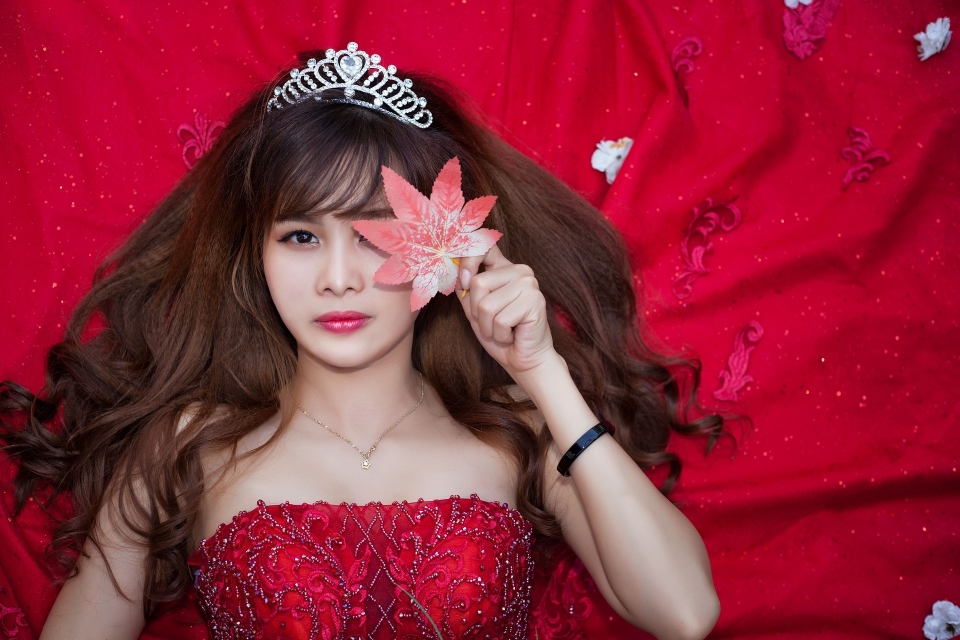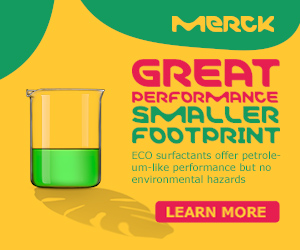Cosmetics & Personal Care
The global pull of K-beauty 26th April 2019
By Victoria Ryoo, Deputy General Manager at SammiChem, part of the Azelis group
Victoria Ryoo, Deputy General Manager at SammiChem, part of the Azelis group, looks at how K-beauty has taken the world by storm.
Victoria Ryoo, Deputy General Manager at SammiChem, part of the Azelis group, looks at how K-beauty has taken the world by storm.
It seems to be a common understanding that Koreans have great skin. Admittedly, when you walk around in the Korean streets, many Korean women seem to have healthy, shiny skin. So, why is it that Korean women seem to have a better skin condition than women from other countries? Is there some kind of special skin gene?

Korean women’s healthy skin is the results of a thorough and conscientious skin care routine, with 5 to 7 steps. These many steps and products are a complete contrast to the skin care ritual of Western women who have traditionally only used 2 to 3 different products in their daily beauty routines.
Korean beauty trends have recently become widespread around the world; it is no longer only Korean women that use the ‘Korean Skin Care routine’ as their bible. BB creams, for example, have become very popular outside Korea and have become a global success and whitening products are also trending beyond Southeast Asia. Korean skin care and cosmetics have spread across Asia and into Western societies such as Europe and America. Fashion magazines refer to this as the ‘Korean Skin Care Phenomenon’. In addition, Reddit, a social network website in the US, claims that Korean skin care has become one of the most popular cosmetic regimes for all ages and skin types. So when did the Korean beauty industry, commonly referred to as ‘K-beauty’, get the attention of the whole world?
A good way to grasp exactly how popular K-beauty has become is to visit a cosmetics shop in Myeongdong, Seoul. Chinese and other foreign customers completely outnumber the Korean customers. Here, K-beauty’s popularity is mostly visible amongst people in their twenties and thirties, a group of consumers fascinated by the sophistication and unique characteristics of the Korean cosmetics.
The rise of K-beauty in China was interrupted for a while due to political conflicts. However, in January 2018, local factories began to operate again, and large-scale export orders continued. During this period, a Korean cosmetics company reported supplying a total of 64 billion dollars’ worth of K-beauty products to 20,000 Chinese stores. The duty-free shopping industry in Korea expects the popularity of K-beauty to lead to an increase in domestic sales.
K-beauty is also hot in Hong Kong. Korea’s share of cosmetic imports to Hong Kong has remained at the top since 2015. By October 2017, Hong Kong’s cosmetic imports amounted to 769.2 million dollars, which accounted for 23.4% of the top 10 importing countries. The biggest share of Hong Kong’s imported cosmetics goes to skin care and other beauty products, followed by lip and eye make-up products.
Lee Kyung-nam, Korea Trade & Investment Promotion Agency’s (KOTRA) Hong Kong Trade Center researcher, comments “Competition amongst cosmetic companies has become fierce as Korean cosmetics have secured a considerable position in Hong Kong. Consumer trend analysis and marketing strategies will become more important in order to persuade the consumers.”
Following a full integration in Northeast Asia, K-beauty is now increasing its advances into Southeast Asia. According to cosmetic industry experts, local cosmetics companies are speeding up their advance into the Middle East with the opening of new outlets in Southeast Asian countries such as Indonesia and Malaysia. Nature Republic, a South Korean cosmetics brand which had previously made inroads into Indonesia in 2012, has recently been preparing to step up its offering and expand its sales network, and has opened its first store at the Jakarta-based shopping mall ‘Liquo Mall’. They believe that the ‘Korean Wave’, also known as ‘hallyu’, a term referring to the global popularity of South Korea’s cultural economy exporting pop culture, entertainment, music, has a good chance of also incorporating personal care as demand for Korean cosmetics has soared.
LG Household & Health Care also entered the Middle East in 2006 after advancing to Indonesia in 2004 with Face Shop, a South Korea-based skin care and cosmetics manufacturer and retailer. Currently, LG Household & Health Care has around 70 stores in Indonesia and 50 in Malaysia. Likewise, AmorePacific, another South Korean beauty and cosmetics conglomerate, has been expanding its business towards Indonesia, showing high growth for cosmetics, as well as in Singapore, Malaysia and others. It opened its first Innisfree store in Indonesia in March last year and has started targeting Middle East markets as of 2018.
“The cosmetics market in the Middle Eastern countries has grown rapidly in just one to two years,” an industry source said. “The social atmosphere around the spread of the ‘hallyu’ culture and the expansion of women’s rights is serving as a channel for the spread of K-beauty.”
K-beauty is expanding beyond Asia to Europe and America. Recently, interest in Korean cosmetics has been surging in Russia. For years, there seemed to be a Russian preference for ‘Made in Europe’ cosmetics. What caused the Russians, however, to break their prejudices and pay attention to Korean cosmetics?
It could be the unique marketing strategy, the cost and outstanding quality and variety of materials used by Korean cosmetics companies that influenced this shift of product preference. South Korean cosmetics companies are making good use of social media and bloggers to promote their products. It’s also important to understand that Korean cosmetics are cheaper than A-listed brands. With the Russian ruble currency falling, the Russian consumer market has been looking for cosmetics brands that can replace expensive European brands and this may have boosted the preference for Korean cosmetics. In addition, special materials are an important factor driving interest in Korean cosmetics. Russian customers are said to be curious about exotic ingredients such as snail collagen, making them want to try these speciality ingredients.
As K-beauty’s position expands, global beauty brands are also paying a lot of attention to it. Giorgio Armani recently opened ‘Armani Box’, an interactive pop-up store where visitors can experience the brand’s identity and sensibilities, at the Shinsegae Department Store in southern Seoul. The opening in Seoul, the centre of K-beauty, was the seventh opening of the pop-up store, after major cities around the world, including Paris, London, Hong Kong, Tokyo, Beijing and New York. The ‘Armani Box’ is a hotspot that has already captivated beauty enthusiasts around the world, with tens of thousands of reviews already overflowing social media.
Recent developments from global cosmetics brand MAC also demonstrates K-beauty’s power and influence. Products such as Strawberry Milk coloured lipstick ‘Angels’ and Coral colour lipstick ‘Razzlers’, were initially released on request of the Korean MAC, but also became a sensational hit around the world. Their orange lipstick ‘Korean Candy’ made K-beauty’s influence very real. As such, K-beauty not only spreads Korean cosmetics to the global beauty market, but also influences global beauty brands.
The K-beauty platform Stylian recently launched ‘StudioK’, which allows beauty creators to produce K-beauty-related content. Stylian sells more than 120 beauty trends and 10,000 K-beauty products, including Innisfree, Pyeonaek, Heimish and Misha, to 80 countries around the world, including the United States, China, Japan, Germany and Malaysia.
The K-beauty industry has already spread to many countries around the world and in order for K-beauty to continue to grow, it will need to go beyond selling Korean cosmetics and producing quality content related to cosmetics to promote K-beauty’s spirit around the world. If K-beauty continues to spread at this tremendous rate, we expect that Korea will stand tall at the centre of the beauty industry in a few years.
Contact:
Victoria Ryoo, Deputy General Manager at SammiChem, part of the Azelis group, #1401 Megacenter, SKn Techno Park, 124 Sagimakgol-ro, Jungwon-gu, Sungnam-si, Gyunggi-do 13207, Republic of Korea
T: 82 31 776 2555
www.azelis.com



